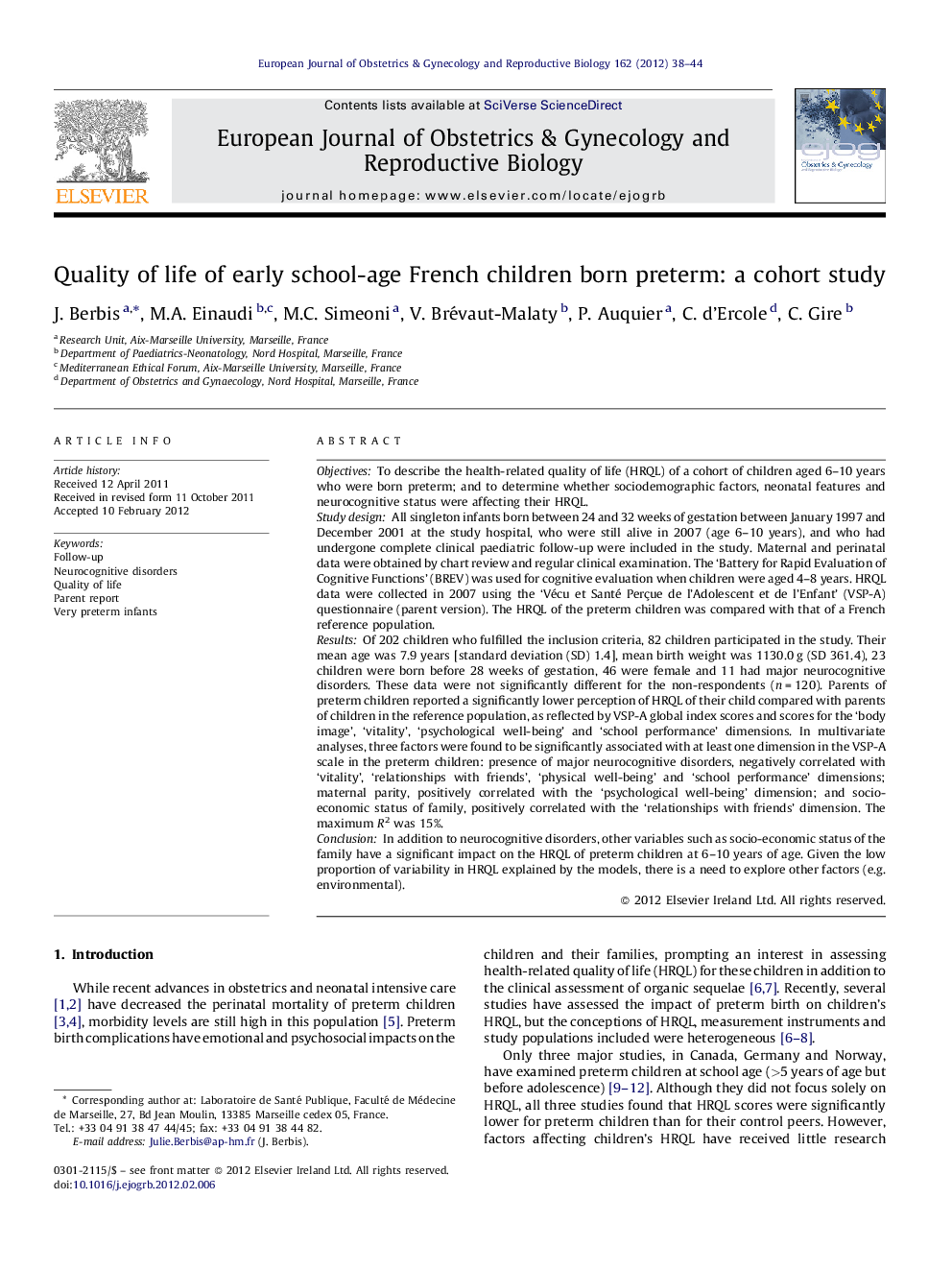| کد مقاله | کد نشریه | سال انتشار | مقاله انگلیسی | نسخه تمام متن |
|---|---|---|---|---|
| 3920606 | 1599829 | 2012 | 7 صفحه PDF | دانلود رایگان |

ObjectivesTo describe the health-related quality of life (HRQL) of a cohort of children aged 6–10 years who were born preterm; and to determine whether sociodemographic factors, neonatal features and neurocognitive status were affecting their HRQL.Study designAll singleton infants born between 24 and 32 weeks of gestation between January 1997 and December 2001 at the study hospital, who were still alive in 2007 (age 6–10 years), and who had undergone complete clinical paediatric follow-up were included in the study. Maternal and perinatal data were obtained by chart review and regular clinical examination. The ‘Battery for Rapid Evaluation of Cognitive Functions’ (BREV) was used for cognitive evaluation when children were aged 4–8 years. HRQL data were collected in 2007 using the ‘Vécu et Santé Perçue de l’Adolescent et de l’Enfant’ (VSP-A) questionnaire (parent version). The HRQL of the preterm children was compared with that of a French reference population.ResultsOf 202 children who fulfilled the inclusion criteria, 82 children participated in the study. Their mean age was 7.9 years [standard deviation (SD) 1.4], mean birth weight was 1130.0 g (SD 361.4), 23 children were born before 28 weeks of gestation, 46 were female and 11 had major neurocognitive disorders. These data were not significantly different for the non-respondents (n = 120). Parents of preterm children reported a significantly lower perception of HRQL of their child compared with parents of children in the reference population, as reflected by VSP-A global index scores and scores for the ‘body image’, ‘vitality’, ‘psychological well-being’ and ‘school performance’ dimensions. In multivariate analyses, three factors were found to be significantly associated with at least one dimension in the VSP-A scale in the preterm children: presence of major neurocognitive disorders, negatively correlated with ‘vitality’, ‘relationships with friends’, ‘physical well-being’ and ‘school performance’ dimensions; maternal parity, positively correlated with the ‘psychological well-being’ dimension; and socio-economic status of family, positively correlated with the ‘relationships with friends’ dimension. The maximum R2 was 15%.ConclusionIn addition to neurocognitive disorders, other variables such as socio-economic status of the family have a significant impact on the HRQL of preterm children at 6–10 years of age. Given the low proportion of variability in HRQL explained by the models, there is a need to explore other factors (e.g. environmental).
Journal: European Journal of Obstetrics & Gynecology and Reproductive Biology - Volume 162, Issue 1, May 2012, Pages 38–44